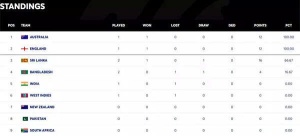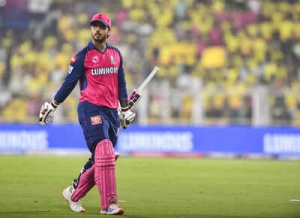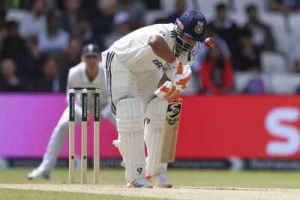BIRMINGHAM: The unusual boundary dimensions at Edgbaston sparked debate as the second Test began. Season ticket holders noted the distinctly asymmetrical boundary cushions, a departure from the ground's typical Test match setup.

The boundary fence on the scoreboard side, a wide long-off for a right-hander from the pavilion end, appeared particularly short. Observers joked about the unused playing area, suggesting it could host a children's game.
The longest boundary measured 65 metres towards cow corner, while the straight boundaries were approximately 60 metres. The Indian team's decision to field two spinners raises questions about whether the adjusted boundaries aim to facilitate aggressive hitting by the England batsmen.
One of England's perceived weaknesses lies in their vulnerability against spin bowling. The Indian camp has openly stated that spin could restrict the England's batting lineup.
India selected Washington Sundar over Kuldeep Yadav for his ability to maintain tight lines for extended periods, alongside his superior batting skills lower down the order. However, the shortened boundaries might embolden the English batsmen to attack India's spinners.
The Indian team previously expressed discontent during the 2019 World Cup when one side of the boundary was unusually short for their match against England. Then, England's batters successfully countered the in-form Indian spinners, Kuldeep and Chahal.
ICC regulations stipulate that boundary sizes can range from 59m to 90m. Reports suggest certain parts of the boundary were shortened by at least 5-10m. While a minimum distance of nine feet should exist between the ropes and advertising boards, one side appeared to have 20-25 feet of space.
Newer articles
Older articles
 Bumrah Boosts India's Hopes: Pacer Back in Nets as Focus Shifts to Bowling for Edgbaston Test
Bumrah Boosts India's Hopes: Pacer Back in Nets as Focus Shifts to Bowling for Edgbaston Test
 Mirabai Chanu Reveals Relentless Dedication: Training, Weight Control Dominate Even Family Time
Mirabai Chanu Reveals Relentless Dedication: Training, Weight Control Dominate Even Family Time
 Edgbaston Boundary Dimensions Under Scrutiny as India's Spin Strategy Faces Test
Edgbaston Boundary Dimensions Under Scrutiny as India's Spin Strategy Faces Test
 Australia's Triumph Reshapes WTC Standings: Where Does India Stand After West Indies Defeat?
Australia's Triumph Reshapes WTC Standings: Where Does India Stand After West Indies Defeat?
 ICC Test Rankings: Pant Leaps to Career High, Bumrah Still King, Root Reigns Supreme
ICC Test Rankings: Pant Leaps to Career High, Bumrah Still King, Root Reigns Supreme
 Nitish Rana Eyes Delhi Return After Disappointing Uttar Pradesh Stint
Nitish Rana Eyes Delhi Return After Disappointing Uttar Pradesh Stint
 Prithvi Shaw Acknowledges Missteps, Charts Course for Cricket Redemption
Prithvi Shaw Acknowledges Missteps, Charts Course for Cricket Redemption
 Rishabh Pant's "Revolutionary" Batting: Greg Chappell Compares India Star to Gilchrist After England Test Display
Rishabh Pant's "Revolutionary" Batting: Greg Chappell Compares India Star to Gilchrist After England Test Display
 India's Harshit Rana Released from Squad Ahead of Pivotal Second Test Against England
India's Harshit Rana Released from Squad Ahead of Pivotal Second Test Against England
 Gavaskar Calls for Kuldeep Yadav's Inclusion in Second Test Amid Bumrah Fitness Concerns After India's Defeat
Gavaskar Calls for Kuldeep Yadav's Inclusion in Second Test Amid Bumrah Fitness Concerns After India's Defeat